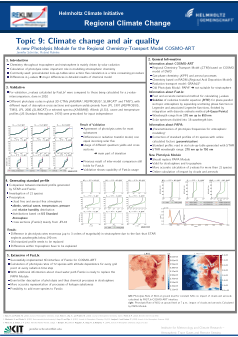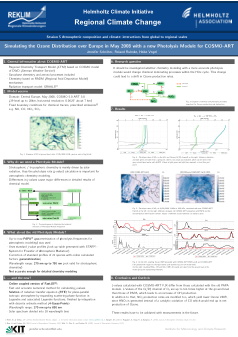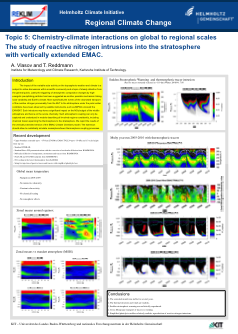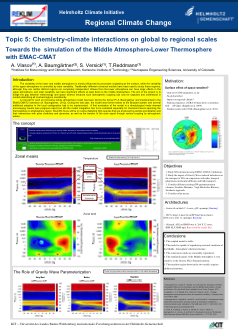Study of atmospheric composition and climate: interactions from global to regional scales.
The following questions are investigated: What factors determine the interaction between regional climate change and atmospheric composition? What are the potential consequences of climate change and air pollution on human human health and ecosystems?
Regional Climate Change (REKLIM)
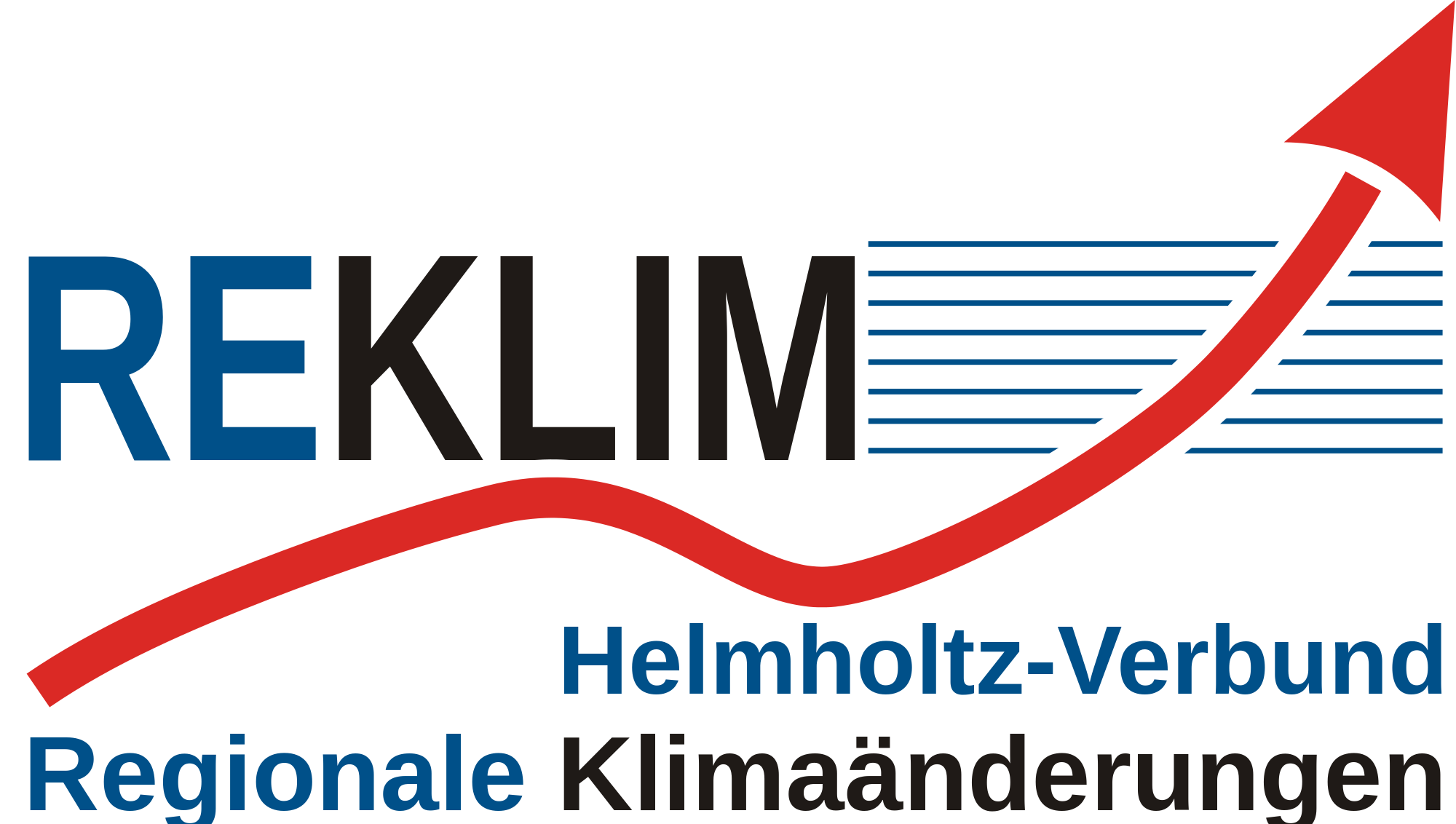 |
The Helmholtz Climate Initiative REKLIM (Regional Climate Change) is a network of nine research centers of the Helmholtz Association. REKLIM uses the competence bundled in the HGF for regional observation and process studies (in-situ observations, airborne - and satellite observations) in combination with model simulations to improve regional and global climate models, which should provide a solid basis for climate-related decision support. In addition, global climate simulations are used to investigate the impacts of climate variability and change at regional scales with improved modeling systems for attribution and impact studies. On the other hand, the process modules and parameterizations resulting from these studies also serve to improve global climate models. In particular, with respect to climate change impacts, REKLIM will open up several opportunities to improve our understanding of the regional Earth system. Furthermore, decision makers will be supported by the Regional Climate Offices of the Helmholtz Association and the Climate Service Center in assessing risks and opportunities and in developing mitigation and adaptation strategies. |
Prof. Dr. Peter Braesicke from the Karlsruhe Institute of Technology (IMKASF) and PD Dr. Martin Schultz from the Forschungszentrum Jülich GmbH, IEK-8 lead until 2024 Topic 5: Atmospheric composition and climate: interactions from global to regional scales.
The global system "atmospheric composition and climate" comprises many scales and interactions. Topic 5 explores the full chain of effects leading from global to regional scales. Models and atmospheric chemistry and meteorological observations are used to accomplish this task. At the global scale, for example, trace substance cycles, stratosphere-troposphere exchange, tropopause structure, and aerosol effects are studied. On smaller scales, interactions between clouds, precipitation, and air composition are studied. Another focus is on the built environment and its influence on air composition and climate. Also of interest are urban heat islands, air quality and their influence on humans and ecosystems.
Publications
A new Photolysis Module for the Regional Chemistry-Transport Model COSMO-ART
by Jennifer Schröter and Roland Ruhnke, Bad Salzschlirf, 2014.
Simulating the Ozone Distribution over Europe in May 2008 with a new Photolysis Module for COSMO-ART by Jennifer Schröter, Roland Ruhnke and Heike Vogel, Berlin, 2014.
The study of reactive nitrogen intrusions into the stratosphere with vertically extended EMAC by Alexey Vlasov and Thomas Reddmann, Berlin, 2014.
Towards the simulation of the Middle Atmosphere-Lower Thermosphere with EMAC-CMAT by Alexey Vlasov, Andreas Baumgärtner, Stefan Versick, and Thomas Reddmann, Bad Honnef, 2013.

